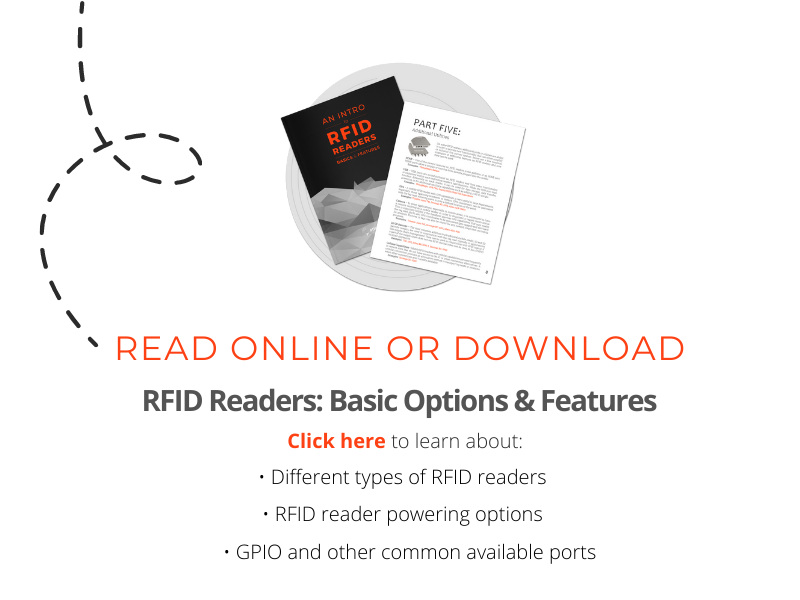10 Facts about RFID Reader Transmit Power
Interested in learning more about RFID Reader Transmit Power? Checkout these 10 facts and comment below if you have a fact or tip to add to our list!
1. Reader transmit power/output power is simply the amount of power transmitted from the reader to the RFID antenna.
This power is measured in decibels-milliwatts (dBm), milliWatts (mW), or Watts depending on the manufacturer’s preference. Here is an example of reader transmit power in all three units of measurement - the Impinj R700 Speedway Reader has a transmit power of up to:
• 33 dBm
• 1.995 Watts
• 1995 mW
2. Converting different transmit power measurements in order to compare two RFID readers can be done using the chart below.

Click here to see the full table
3. Commonly confused, the difference between reader transmit power/output power and system output power is that reader transmit power/output power only considers the power sent out by the RFID Reader to connected antennas.
System output power is a more advanced calculation that takes reader transmit power, cable loss, and antenna gain into account to provide the overall amount of energy sent out by the entire system through the RFID antenna(s). The equation to calculate system output power can be found in our article “ How to Confirm to Regional Regulations When Using RFID ”.
4. Reader transmit power is also commonly confused with reader sensitivity.
While reader transmit power is the amount of power the reader sends out to the antenna, reader sensitivity is the lowest RSSI threshold at which a reader can detect a tag’s return signal. In laymen’s terms, reader sensitivity is the weakest tag signal that an RFID reader is able to detect. The more sensitive the reader is, the lower the sensitivity rating, and the lower the Received Signal Strength Indicator or RSSI value that can be detected.
To learn in depth about the difference between Reader transmit power and receive sensitivity, checkout our article - RFID Systems Testing: Transmit Power vs. Receive Sensitivity.
5. Although system output power cannot exceed 30 dB in most countries, some readers have a reader transmit power of 31 or 33 dBm in order to account for cable loss.
If all RFID readers had a maximum transmit power of 30 dBm and used an antenna cable to connect the reader and antenna(s), very few, if any, systems would be transmitting the maximum amount of allowed power, according to regional regulations. In order to provide users with the ability to receive the most out of their RFID systems, RFID Reader manufacturers allow for most readers to transmit just over the maximum system power output to compensate for a system’s cable loss.
6. Reader transmit power can be turned down in applications due to too much read range, too many stray reads, and/or exceeding regional regulations for system output power.
7. Most RFID readers have a minimum transmit power of 0 or 10 dBm and a maximum transmit power between 30 and 33 dBm.
8. Most RFID readers allow the transmit power to be customizable between the minimum and maximum values, so the user can ensure the transmit power is exactly what they need for their application.
9. An RFID reader’s transmit power, measured in dBm, is on the logarithmic scale.
This means that reducing the power from 30 dBm to 27 dBm is not a 10% power reduction as it seems, but a 50% reduction in power. Similarly, if you increase a reader’s transmit power by 3 dBm you are doubling your power.
10. Many other factors affect read range, but all other factors being equal, if you increase an RFID reader’s transmit power you increase a system’s potential read range.
Conclusion
For more information on RFID Readers and how they affect your RFID system, comment below or contact us! Or read more about RFID Transmit Power in our article - RFID Systems Testing: Transmit Power vs. Receive Sensitivity.

Do you have a fact or tip to add to our list?
Comment below and we might add your transmit power fact along with your name to our ever-growing list. Also - if you have any hints or unique tips from your experience working with RFID readers and finding the ideal transmit power for your application, comment below too!
